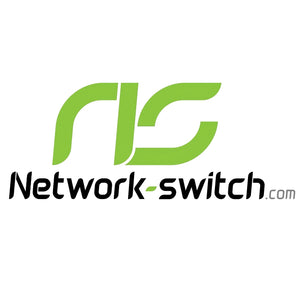In this internet era, and in networking world the difference between Layer 2 and Layer 3 switches plays a vital role in the networking. This post takes a look at their features, what sets them apart, and the best ones for 2025 to help you make the best selection.

What is a Layer 2 Switch?
A Layer 2 switch works in the Data Link Layer (Layer 2) of the OSI model. It forwards data based on MAC addresses and operates in and out of the same LAN. These switches are perfect for breaking up a network, reducing congestion, and improving performance.
Key Features:
MAC address-based forwarding
Supports VLAN for network segmentation
Effective in communication within the same network
Affordable and easy to use
Network Engineering Stack Exchange is countless.
What is a Layer 3 Switch?
Layer 3 switches operate on the Data Link Layer and Network Layers. They leverage the ability of Layer 2 switching to route traffics such as inter-VLAN routing and other traffic management among subnets more efficiently.
Key Features:
IP address-based routing
Dynamic routing protocols (such as OSPF, RIP) are supported
Inter-VLAN linking, possible.
Security and Traffic Management The other added value MTD provides is in security and traffic management.
Key Feature Comparison
| Feature | Layer 2 Switch | Layer 3 Switch |
| OSI Layer | Data Link Layer (Layer 2) | Data Link & Network Layers (Layers 2 & 3) |
| Forwarding Basis | MAC addresses | IP addresses |
| Routing Capability | No | Yes |
| VLAN Support | Yes (intra-VLAN) | Yes (inter-VLAN routing) |
| Routing Protocols | Not supported | Supported (e.g., OSPF, RIP) |
| Use Case | Small to medium-sized LANs | Large networks requiring inter-subnet routing |
| Cost | Lower | Higher |
Top 5 Layer 2 Switches in 2025
| Model | Ports & Speed | Key Features | Ideal For |
| Cisco Catalyst 2960-X | 24/48 x 1G | Energy-efficient, scalable | Enterprise LANs |
| TP-Link TL-SG3428 | 24 x 1G + 4 x SFP | VLAN, QoS, ACLs | SMBs |
| NETGEAR GS728TP | 24 x 1G PoE+ | PoE support, advanced management | IP camera deployments |
| D-Link DGS-1210-28 | 24 x 1G + 4 x SFP | Smart management, energy-saving | Small offices |
| Ubiquiti UniFi Switch 24 | 24 x 1G + 2 x SFP | UniFi Controller integration | Home labs, SMBs |
Top 5 Layer 3 Switches in 2025
| Model | Ports & Speed | Key Features | Ideal For |
| Cisco Catalyst 9300 | 24/48 x 1G | Advanced security, modular uplinks | Large enterprises |
| HPE Aruba 2930F | 24/48 x 1G + SFP | Static and RIP routing, PoE+ | Campus networks |
| Juniper EX3400 | 24/48 x 1G + SFP | Virtual Chassis technology | Data centers |
| MikroTik CRS326-24S+2Q+RM | 24 x SFP+ + 2 x QSFP+ | High throughput, Layer 3 features | High-performance networks |
| TP-Link T3700G-28TQ | 24 x 1G + 4 x 10G SFP+ | Static routing, ACLs, QoS | SMBs requiring inter-VLAN routing |
Things to consider before purchasing
Where to Buy?
Network-switch.com: Authorized distributor selling a variety of networking equipment from Cisco, Huawei, Ruijie suppliers.
( Brand (Factory Sourced) Official Brand Websites) : Authenticity and Newness from the brand source.
The namebrand sellers: Places like Amazon and Newegg offer customer reviews and low prices.
Considerations
Network Simple Use or Advanced Use: Decide if your network needs simple switching or more advanced routing.
Budget Restraints: Layer 3 switches are more costly, but they perform more tasks.
Scalability: Assess in advance possible expansion and decide on a switch in order to support your growing network in the future.
Conclusion
Whether Layer 2 switches or Layer 3 switches is selected for your specific network needs. For simple cost-effective LAN networks, Layer 2 switches do an excellent job. But for applications that need inter-VLAN routing capabilities and traffic management, Layer 3 switches are must-haves.
You can make the choice which is most suitable for your network by comparing them and the things that your network requires to perform and scale smoothly.
Frequently Asked Questions
Q1: I can replace a router with a Layer 3 switch instead right?
A: Yes, Layer 3 switches are capable of routing within a LAN environment, however, Layer 3 switches usually do not come with WAN interfaces and it usually lacks the advanced features offered by routers rendering them less than ideal candidates for complete router replacement.
Q2: Are Layer 3 switches safer than Layer 2 switches?
A: Layer 3 switches have more security capabilities such as access control lists (ACLs) and the ability to support routing protocols, providing better traffic control and segmentation.
Q3: Can VLANs be used on Layer 2 switches?
Q: Can VLAN be done in the same LAN with a managed Layer 2 switch? A: Yes, most managed Layer 2 switches support VLANs, meaning that you can segment your network within the same LAN.
Q4: Can you also do an upgrade process from Layer 2 to Layer 3 switch?
A: Yes, and often recommended as the network complexity rises and requires for more advanced router capabilities.
Did this article help you or not? Tell us on Facebook and LinkedIn . We’d love to hear from you!






 https://network-switch.com/pages/about-us
https://network-switch.com/pages/about-us


